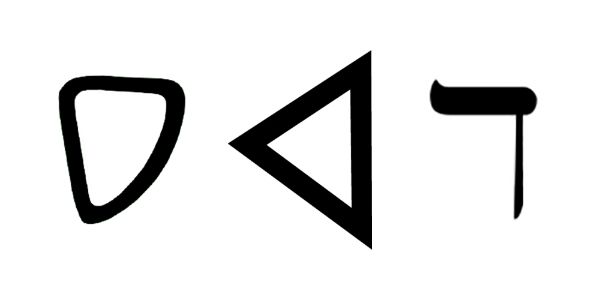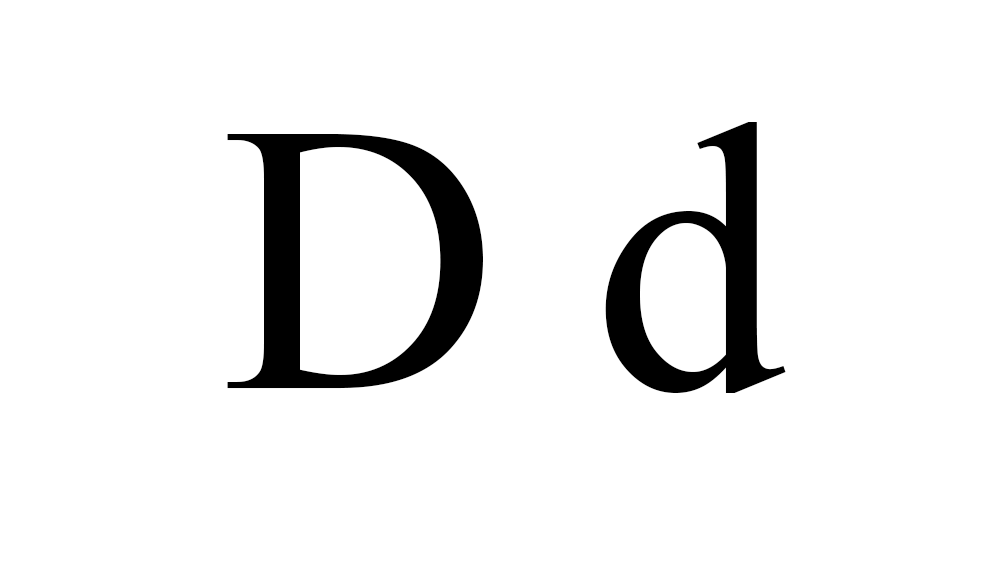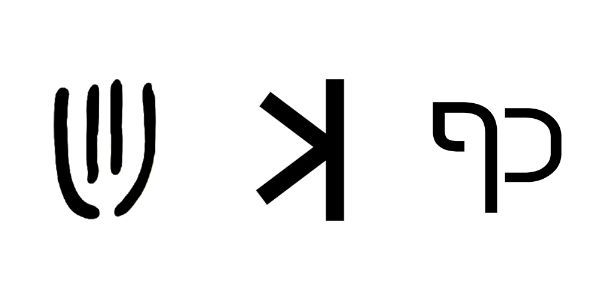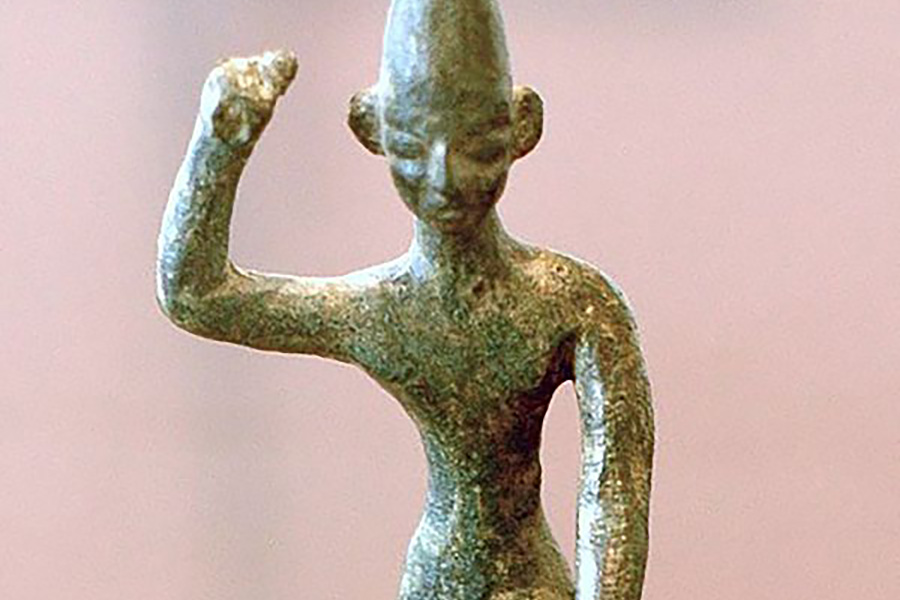Acceptable ways to write it: dalat (dlt)
The letter dalat (𐤃) or D/d is the fourth letter in the Afroasiatic language known as Paleo-Hebrew (Ābarayat). The letter has been equated with the letter D in the English language. The dalat (𐤃) is one of the few letters that have a consistent association with both Paleo-Hebrew and Modern Hebrew. The letter is based on a glyph of the Middle Bronze Age alphabets, probably called dalt “door” (door in Modern Hebrew is deleth).
The Paleo-Hebrew language or the original language of the Ābarayam is one spoken with an emphasis on the rauakh (breath, wind, spirit). With the language of the Ābarayam, each letter has a meaning and a number associated with it that adds meaning to each word they’re used with. Below you will be able to learn more about the letter in Ancient Hebrew, Yiddish Hebrew, Greek, and much more.
Letter Meanings
| Letter | Meaning |
|---|---|
| 𐤃 (d) – da | Tent door, pathway |
| Prefix | of, who, which, that, what |
| Suffix | Not applicable |
| Number | 4 |
Based on the meaning of the letters the word could be defined as:
- “pathway of…”
- “door of…”
Definitions for 𐤃 / d
| Language | Word | Transliteration | Pronunciation | Definition |
|---|---|---|---|---|
| Ābarayat | 𐤃 | d | da | tent door, pathway, move, hang, entry |
| English | D d | d | /ˈdi:/ | the fourth letter and the third consonant of the modern English alphabet. |
| Hebrew | ד | d | /d/ | door |
| Arabic | د | d | /ˈdi:/ | direction, tend towards |
| Greek | Δ δ | d | [d] | delta; |
Images for 𐤃 / d


History of Meaning
The entrance of the Ābarayam’s tent was covered by a curtain suspended from a horizontal pole. The pictograph of dalat represents the “door” of the tent. Also, it can mean “a back and forth movement” as one goes back and forth through the tent through the door. It can mean “dangle” as the tent door dangled down from a roof pole of the tent. It can also mean weak or poor as one who dangles the head down.
History of the Letter D
The letter D was introduced in 800 BCE (3125 AM). The Greeks adopted it and renamed it “delta.” The Romans later added serifs and varied the thickness of the lines, softening one side into a semicircle.
The etymological value of d in words of native English origin is generally the same as that of German t (th), Sanskrit dh, Greek θ, Latin f (initial) or d or b (medial), all being derived from dh in the parent Indo-European speech. In some other instances, d is derived from Indo-European t when the d originally resulting from the t has been subsequently altered by the change familiarly known as Verner’s law. The occurrence of this change depended on the place of the Indo-European accent.
The Semitic letter Dāleth may have developed from the logogram for a fish or a door. There are many different Egyptian hieroglyphs that might have inspired this. In Semitic, Ancient Greek, and Latin, the letter represented /d/; in the Etruscan alphabet, the letter was superfluous but still retained (see letter B). The equivalent Greek letter is Delta, Δ.
The minuscule (lower-case) form of ‘d’ consists of a loop and a tall vertical stroke. It developed by gradual variations on the majuscule (capital) form. In handwriting, it was common to start the arc to the left of the vertical stroke, resulting in a serif at the top of the arc. This serif was extended while the rest of the letter was reduced, resulting in an angled stroke and loop. The angled stroke slowly developed into a vertical stroke.
Definitions for 𐤃𐤉 / day
When adding the 𐤉 (yad) to the end of a word, it creates a possessive of the original word. It can either signify “my…” or identify a member of a nation. For example, 𐤏𐤁𐤓 (Ābar) is the progenitor, but 𐤏𐤁𐤓𐤉 (Ābaray) is the singular descendant of him also known as a Hebrew.
| Language | Word | Transliteration | Pronunciation | Definition |
|---|---|---|---|---|
| Ābarayat | 𐤃𐤉 | day | dey | sufficiency, enough, able, according to, after ability, among, as oft as, more than enough, from, in. |
| English | enough | enough | ih-nuhf | adequate for the want or need; sufficient for the purpose or to satisfy desire: |
| Hebrew | דַּי | day / di | dahee / dee | sufficiency, enough |
| Arabic | ||||
| Greek |
Images for 𐤃𐤉 / day


Definitions for 𐤃𐤉𐤌 / dayam
When adding the 𐤌 (mayam) after the 𐤉 (yad) to the end of a word, it creates a plural of the original word. It can identify multiple members of a nation. For example, 𐤏𐤁𐤓 (Ābar) is the progenitor, but 𐤏𐤁𐤓𐤉𐤌 (Ābarayam) are the plural descendants of him also known as Hebrews.
| Language | Word | Transliteration | Pronunciation | Definition |
|---|---|---|---|---|
| Ābarayat | 𐤃𐤉𐤌 | dayam | daw-yawm | |
| English | ||||
| Hebrew | ||||
| Arabic | ||||
| Greek |
Images for 𐤃𐤉𐤌 / dayam


Definitions for 𐤃𐤉𐤕 / dayat
When adding the 𐤕 (tau) after the 𐤉 (yad) to the end of a word, it creates a plural of the original word. It identifies the language or a sign of a nation’s existence. For example, 𐤏𐤁𐤓 (Ābar) is the progenitor, but 𐤏𐤁𐤓𐤉𐤕 (Ābarayat) is the language of him also known as Paleo-Hebrew language.
| Language | Word | Transliteration | Pronunciation | Definition |
|---|---|---|---|---|
| Ābarayat | 𐤃𐤉𐤕 | dayat | daw-yawt | |
| English | ||||
| Hebrew | ||||
| Arabic | ||||
| Greek |
Images for 𐤃𐤉𐤕 / dayat


Classification
You can continue your studies of the words by viewing Strong’s entries for:



